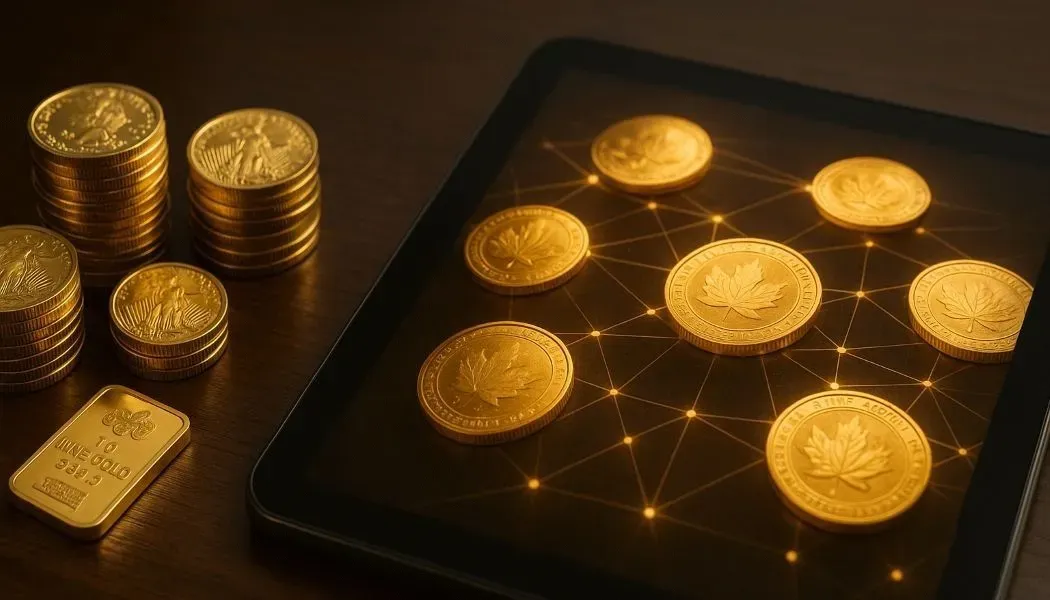Fractional Gold vs. Crypto Tokenization: Future of Accessible Wealth

How Technology Is Redefining Gold Ownership
For centuries, gold has been the ultimate store of value — tangible, enduring, and globally recognized. But as digital innovation reshapes financial markets, a new frontier has emerged: the ability to own gold not only physically but also digitally through blockchain tokenization.
At the same time, the popularity of fractional gold — smaller denominations like 1/10 oz, 1/20 oz, and even Goldbacks — has made the metal more accessible than ever to small investors. Whether through physical bullion or digital tokens, investors today can participate in gold markets with unprecedented flexibility and precision.
The key question is: which approach delivers more value for modern investors — fractional gold or crypto tokenization?
Fractional Gold: Tangible Value, Scaled for Every Investor
Fractional gold allows investors to own smaller, more affordable portions of physical gold bullion — often in the form of coins, bars, or innovative spendable notes like Goldbacks. With the gold price now hovering near record highs, these smaller denominations make it easier for individuals to buy gold without committing to a full ounce.
Advantages of fractional gold include:
🔹 Physical ownership: Investors hold a tangible asset, free from digital or counterparty risk.
🔹 Accessibility: Lower price points make entry into the precious metals market achievable for all investors.
🔹 Long-term security: Historically, physical gold retains purchasing power across generations, regardless of currency fluctuations or inflation.
However, fractional gold also comes with logistical tradeoffs — such as storage, shipping, and insurance costs — which can slightly reduce overall returns. Still, for those who value sovereignty and tangible wealth, physical gold remains unmatched.
Tokenized Gold: Where Blockchain Meets Bullion
Tokenized gold — sometimes called digital gold — is gold that’s represented by blockchain-based tokens, each backed 1:1 by physical bullion held in secure vaults. Leading examples include Tether Gold Tokens (XAUt0), PAX Gold (PAXG), and AurusGOLD (AWG).
These digital assets allow investors to buy, sell, or trade fractional amounts of gold seamlessly across global markets — combining blockchain technology with gold’s enduring stability.
Benefits of tokenized gold include:
🔹 Fractional ownership without storage costs: No vaults or safes required; holdings exist on the blockchain.
🔹 Instant transferability: Tokens can be sent or exchanged in seconds, 24/7.
🔹 Transparency: Many token issuers publish verifiable audits of their physical gold reserves.
🔹 Integration with DeFi: Tokenized gold can be used for staking, lending, and yield generation on decentralized platforms.
Still, tokenized gold introduces new types of risk. Investors depend on the custodian’s honesty, blockchain security, and regulatory stability. While it’s an innovative solution, it also relies on centralized verification — a paradox in a decentralized world.
Gold vs. Crypto: Two Paths to the Same Goal
When comparing fractional gold to crypto tokenization, both serve a common purpose: making historically valuable assets accessible to everyday investors. Yet, they appeal to different mindsets.
🔹 Fractional gold caters to those who value tangibility, permanence, and independence from digital systems.
🔹 Tokenized gold appeals to those who prioritize liquidity, accessibility, and integration with the broader crypto ecosystem.
Key differences include:
🔹 Custody: Physical vs. digital.
🔹 Liquidity: Secondary markets for physical gold vs. instant blockchain transactions.
🔹 Security: Vault and insurance risk vs. smart contract and custodian risk.
🔹 Volatility: Gold is steady; token markets may fluctuate with crypto sentiment.
Ultimately, both provide exposure to gold’s intrinsic value — one through traditional bullion ownership, the other through modern blockchain innovation.
Bridging the Gap: A Balanced Strategy
In a rapidly evolving financial landscape, many investors are choosing a hybrid approach — holding both physical gold and tokenized gold assets. This strategy blends the timeless stability of bullion with the fluidity of blockchain technology.
🔹 Fractional gold serves as a hedge and tangible reserve — ideal for long-term preservation.
🔹 Tokenized gold offers agility and global accessibility — ideal for fast-moving markets and digital diversification.
For investors watching both the gold price and the crypto market, this dual approach allows participation in both traditional and digital wealth systems — without being overexposed to the volatility of either.
The Bottom Line: Accessible Gold for a Digital World
Whether you choose fractional gold or gold crypto tokenization, both innovations represent a shift toward financial inclusivity. Gold ownership is no longer reserved for institutions or the wealthy — it’s available to anyone with a smartphone or a modest savings goal.
As the lines between physical and digital assets blur, gold continues to evolve — proving once again that true value endures, no matter the format.
Related reading you may find interesting:
Gold Goes Digital: Tether’s Bold Expansion & the Future of Tokenized Bullion